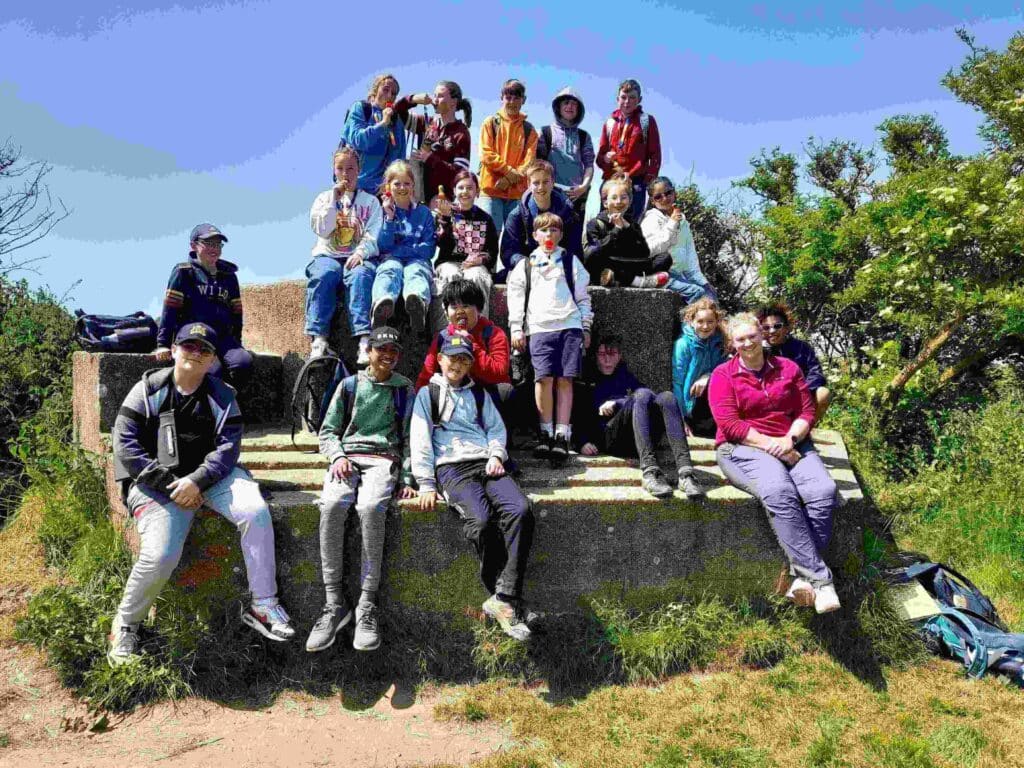On Friday 9 June, Year 7 went to Walton on the Naze as part of their Geography subject – coastlines. On the trip we ventured around the Naze looking at the geological formations of the cliffs, the history of the Naze tower and coastal defences amongst other exciting things. The trip was exciting with multiple engaging activities and facts.
To start the trip, we ventured down to the unmanaged beach to study the features of the area. The layers of rock were clearly visible where the cliff has eroded with the top layer being sand and the bottom layer, London clay. Most of Walton on the Naze is like this, however, red crag sandstone as a mid-layer is common as well. The wave-cut platform that the geography groups were standing on is a fairly recent addition to the beach. The cliff has fallen away by just under 1 metre every year. This was indicated by the WW2 pill- box bunkers that were originally on top of the cliff and which are now barely visible below the sea at high tide. To prove how far the cliffs have eroded from 1945, which is when the pill boxes were made, we measured how far the cliff had moved and it turned out to be an astonishing 70m!
Whilst walking beside the eroding cliffs, we learnt about different weathering techniques such as biological weathering. This is when roots from plants and animals burrow, weakening the rock and eventually causing it to crack and collapse. We saw this from birds digging out caves from the weak sandstone to nest in. At Walton there was much evidence of mass movement which really proves how
quickly the cliffs disappear.
Moving further along the beach, we found some rip-rap guarding the cliff. Rip-rap are huge boulders often made from igneous stone to block waves from hitting the cliff. It is a cheaper alternative (although less effective) to concrete sea walls, which weakens the waves hitting against the disappearing cliffs. One of the sea walls was situated at a seemingly random point along the cliff, however, upon climbing it, we soon discovered it was there to protect the nature reserve. The reserve itself is home to a variety of fauna and flora including one of England’s only lizard species.
The Year 7s trekked through the nature reserve towards the Naze tower which was a clear highlight of the trip. The 26m tall landmark constructed in 1720 is hard to miss, dominating the seaside town even from afar. The museum sections in the tower are packed with interesting artefacts and geological information. The selection includes diagrams of the cliffs, showing that the red-crag-sandstone is up to 2,000,000 years old! There are shark teeth that were found at the site as well as the tusk of a mammoth. It was originally built as a navigation point for ships but in WW2 it was used as an anti-aircraft turret, with the cannon mounted high up on the roof. It later became a radio tower until 2004 when the local family who still own the building opened it to the public as a museum. Looking down from the enormous tower was amazing, with the views to be seen such as the Felixstowe cranes beneath the thick mist.
Finally, after we’d eaten lunch and bought many ice creams, Year 7 moved onto the managed beach to learn about the mass of sea defences in place to prevent the cliff from eroding. These included large drainage pipes set into the cliff to remove water caught between the rocks, therefore hindering the cliff’s collapse, and groynes, made of wood and placed at an opposite angle to the longshore drift to split the waves and prevent the backwash from snatching away the sand. The aim of these was to gather all the pebbles and stones carried by the sea to stop it weakening our vanishing cliffs and to build bigger beaches so the waves break earlier.
That concluded the Year 7 geography trip to Walton on the Naze. It was very fun and interesting at the same time. All the Year 7s had a blast and we’re excited for trips to come! Thank you to all of the staff who came on the trip.
Charles C and James V, Year 7





